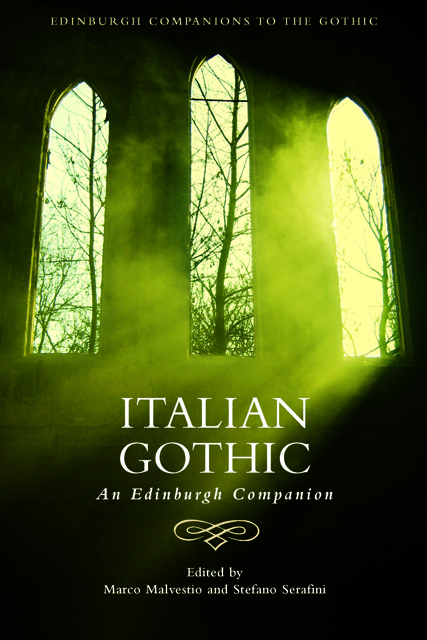13 - The Female Gothic
Published online by Cambridge University Press: 20 October 2023
Summary
The Public Voices of the Italian Female Gothic
The question about what constitutes the Italian Gothic – and implicitly the Female Gothic – remains an open one. If Italy has been defined as the country without the fantastic, could something similar be said about Gothic literature? Was Italy really the country where this Northern literary genre did not live an independent life? The arrival of the Gothic in Italy followed a trajectory of interferences and intertextual moments that rejected the paradigm of mimesis which shaped the vero of the historical novel, as Guido Mazzoni wrote in his Theory of the Novel: ‘The English gothic novel and the German Romanticism expanded the territory of mimesis to imaginary universes that lay very distant from common sense’ (215), or, he explained further, quoting from Defoe's Robison Crusoe, it challenged the ‘middle station of life’ (218–22). The adjective ‘middle’ in this instance is to be read as ‘middle-class’ as well as moderation and accomplishment, or else those social and personal attributes which were directly questioned by the British Female Gothic while only challenged obliquely, but comprehensively, by the Italian one.
In this chapter, we will discuss what might constitute the nineteenth-century Italian Female Gothic and how its female protagonists conveyed critical socio-political messages. By drawing on feminist theories, we argue for only a seemingly subaltern position occupied by the female protagonists of Italian Gothic novels, precisely because from such a stance they can nonetheless articulate forms of social critique, and thus make their voices heard publicly. Since the public realm was necessarily male dominated, and could not be emasculated, the private sphere was, and would continue to be, female. Furthermore, since the tension between these two domains had to remain veiled and unspoken, in order to sustain social order, an alternative means of conveying and sublimating the repressed had to be found. Accordingly, the Female Gothic permits a shift in perspective: the protagonists of these stories allow for a multiplicity of feminine models which did not present a unitary view, but rather a multifaceted understanding of the social fabric of the nation.
- Type
- Chapter
- Information
- Italian GothicAn Edinburgh Companion, pp. 197 - 209Publisher: Edinburgh University PressPrint publication year: 2023



